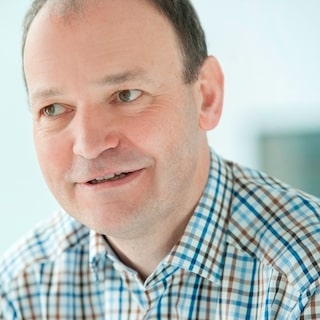The Golden Bands and the future of 6G
15 February 2024


World Radiocommunications Conference (WRC) 2023 concluded just two months ago, but its decisions on next-generation spectrum are already having a big impact on 6G. This month an International Telecommunication Union (ITU) meeting in Geneva hosted spectrum experts seeking to chart 6G’s next steps. Meanwhile the standards bodies have kicked off the 6G standardization process.
The real work on 6G has begun.
You can think of every generation of networking as building a new home. The first thing you need to do is choose the land you wish to build on. In December, WRC-23 did just that by identifying new candidate spectrum to study for 6G.
WRC-23 made some key spectrum decisions that will pave the way towards harmonization of 6G and ensure that service providers can easily embrace the next generation of networking. In short, we now have a solid piece of real estate on which we can build the foundations of 6G.
Specifically, the WRC identified the 7.1-8.4 GHz band as a future candidate for 6G services. 7.1-8.4 GHz is not only part of what we call the “Golden Bands,” but it happens to be the most golden band of them all. It meets every single criteria for driving a global 6G rollout.
The propagation characteristics of 7.1-8.4 GHz would allow operators to build 6G on top of their existing infrastructure. It’s a broad swathe of spectrum, meaning there will be plenty of capacity for multiple service providers in every country. And most significantly, it has the potential to be harmonized throughout a large portion of the world. This means many countries would be able to deploy 6G over the full bandwidth of these frequencies, realizing massive economies of scale and ensuring widespread interoperability.
That wasn’t the only decision WRC-23 made that will impact 6G. The WRC’s voting members also agreed to designate the upper 6 GHz band (6425MHz-7125MHz) for licensed mobile broadband services in Europe, Africa and Middle East (EMEA), Mexico, Brazil and some Asian countries. Additional countries have indicated they would back the band in the coming years. Due to the similarities between the upper 6 GHz and 7.1-8.4 GHz bands, both would provide the same benefits for outdoor deployment. The upper 6 GHz will initially be used for 5G services, but it could easily be repurposed for 6G in the future.
Finally, WRC-23 agreed to study two other bands for future 6G use: 4.4-4.8 GHz and 14.8-15.3 GHz. These frequencies would definitely have a place in future network rollouts, however, in terms of larger contiguous bandwidth blocks, they aren’t as ideal for 6G as other Golden Bands. While service providers would build their primary networks in the upper 6 GHz and 7.1-8.4 GHz, they could use 14-15 GHz to augment capacity in particularly dense or high-demand areas. Meanwhile 4.4-4.8 GHz could be used in industrial and enterprise campus environments.
Perhaps the most encouraging thing about WRC, though, was the increasingly positive attitude we’re seeing toward 6G from the world’s regulators and spectrum policy makers. Many WRC members expressed enthusiasm for exploring other 6G spectrum bands independently, which would only boost 6G’s prospects further. It’s no longer a question of if we pursue 6G. Rather it’s only a question of how.
What’s next?
To continue my house analogy, the next steps will be surveying the land and designing this future home. We will conduct a 4-year study of the 7.1-8.4 GHz, 4.4-4.8 GHz and 14-15 GHz bands to ensure that we can build economically viable and high-performing networks in this spectrum. We will also need to show that we will be good stewards of this spectrum as well as responsible neighbors to the wireless technologies operating in adjacent bands, and in some cases think of smart ways to share it with other users in the band. These findings will be presented to the International Telecommunication Union, which will make the final decision whether to assign the spectrum to 6G at the World Radiocommunication Conference 2027.
In parallel, we will need to design the house that we intend to build on our prospective land. This means we need to create a 6G standard and develop 6G’s underlying technologies. It was no coincidence that 3GPP laid out its 6G standardization plans in December, just as the WRC-23 was finalizing its 6G spectrum decisions. 3GPP will draft the blueprint for future 6G systems. Its work will ramp up this year. Meanwhile, researchers from across the ICT industry – with projects such as Hexa-X II to 6G-ANNA -- will innovate the new technologies that will set 6G apart from its predecessors.
There are a lot of moving parts to this process, and they are all about to start moving simultaneously. A new generation of wireless networking comes about only once a decade. I, for one, am looking forward to having fruitful discussions on 6G at Mobile World Congress in Barcelona. It’s time to roll up our sleeves and make sure we once again deliver the next-generation technologies the world expects from us.

About Ulrich Dropmann
Ulrich Dropmann is Head of Standardization and Industry Environment. Ulrich heads the external standardization engagement for Nokia. He is responsible for global and regional standardization including radio spectrum aspects.
Read more
About Nokia
At Nokia, we create technology that helps the world act together.
As a B2B technology innovation leader, we are pioneering networks that sense, think, and act by leveraging our work across mobile, fixed and cloud networks. In addition, we create value with intellectual property and long-term research, led by the award-winning Nokia Bell Labs.
Service providers, enterprises and partners worldwide trust Nokia to deliver secure, reliable and sustainable networks today – and work with us to create the digital services and applications of the future.
Media inquiries
Nokia Communications, Corporate
Email: Press.Services@nokia.com
Follow us on social media
LinkedIn Twitter Instagram Facebook YouTube



